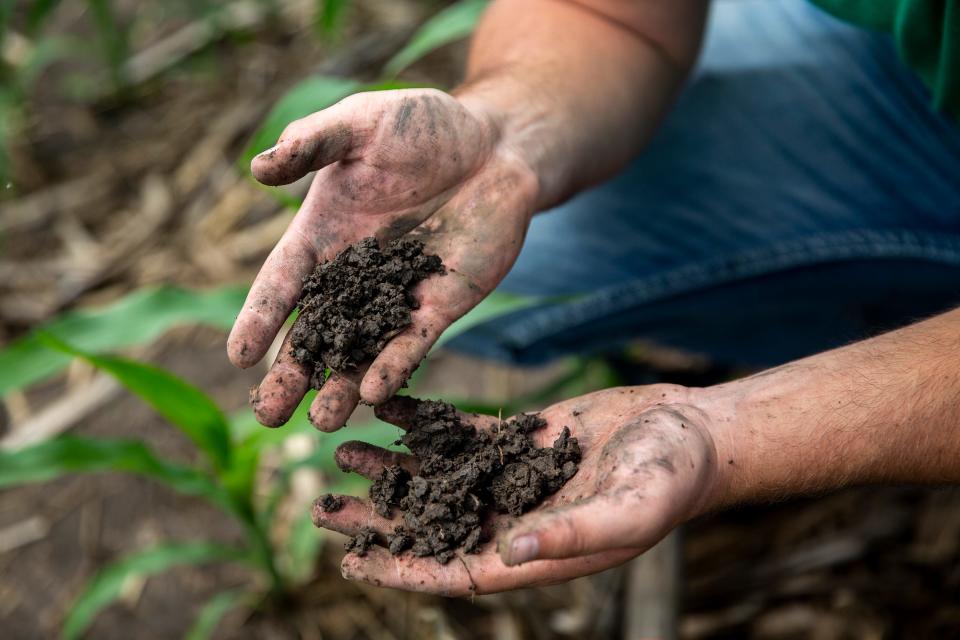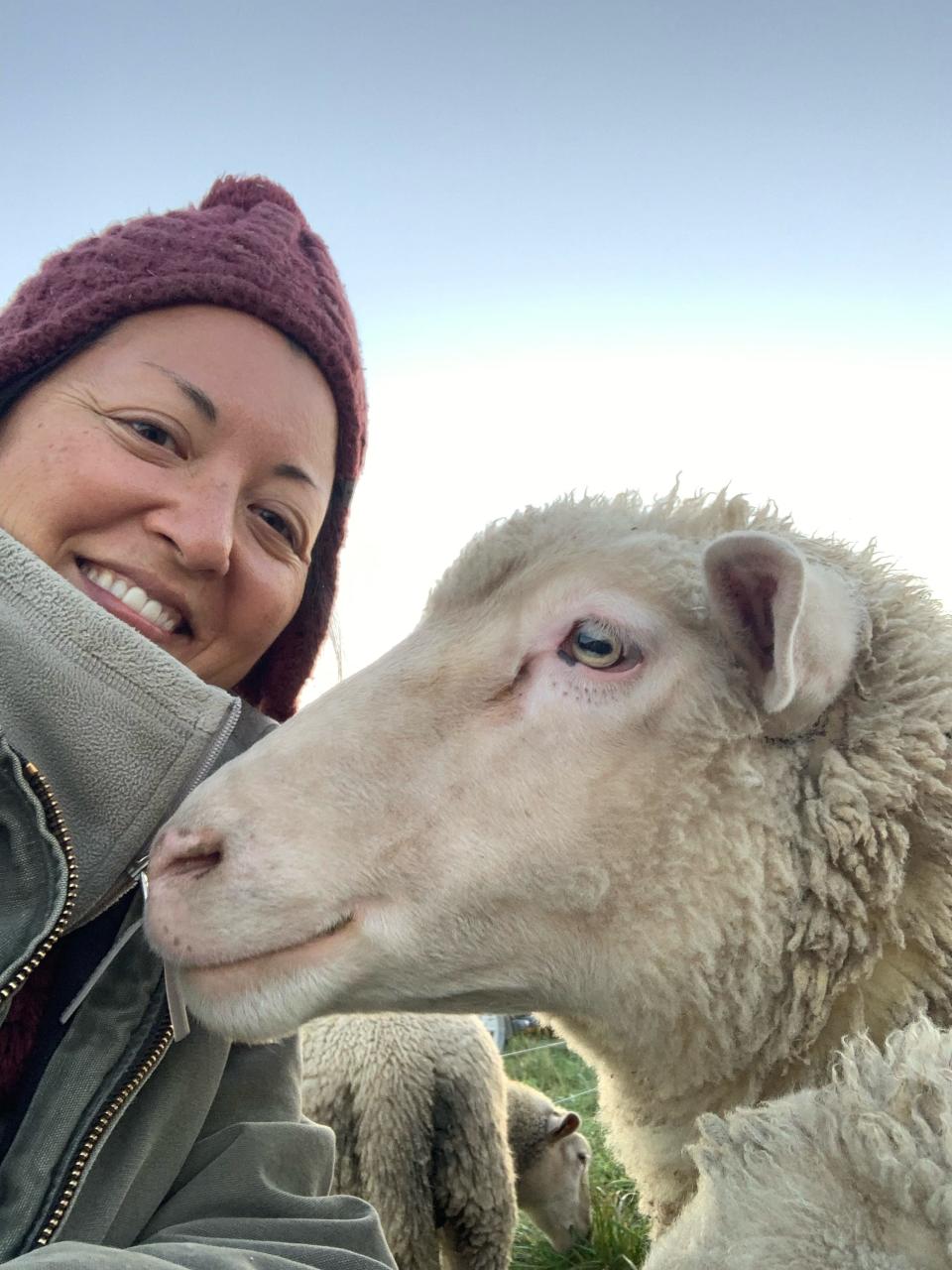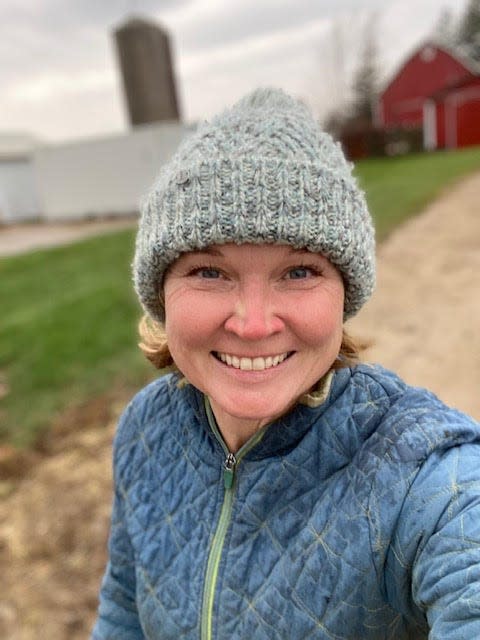Opinion: A visionary farm bill could revitalize rural areas, food and the environment
We are farmers who believe in climate change and our agency to help mitigate its effects. We raise meat, grains, fruits and vegetables for an ever-growing human population, while we store carbon in the soil, reduce fossil fuel use and protect our natural habitat, water and air.
We and thousands of other young farmers need help from the next farm bill, which is up for reauthorization in 2023. This new farm bill could be a legendary piece of legislation that results in more healthy diets, younger and diverse farmers on the land and more climate change mitigation than we have ever seen in the farm bill's history.
Healthy diets should become a product of SNAP
Over three-fourths of the current farm bill funds food stamps and nutrition programs, yet the majority of the food purchased with these programs is processed food and subsidized to be cheaper than fresh food. Low-income users of the food stamp program have higher rates of diabetes, obesity and other diet-related illnesses because of this cheap processed food.
It would be a win-win for farmers and consumers alike if the farm bill prioritized purchasing programs that support locally and regionally grown fresh vegetables, fruits and proteins for institutions and those needing food assistance. Supporting and subsidizing fresh and local foods reduces fossil fuel use, increases the nutrition of the food with fewer food miles and connects consumers to regional farmers to gain knowledge about where their food comes from.
Regional food systems can be a rural boon
If the farm bill emphasized healthy diets and local and regional food systems, farmers like us could contribute to our local economies and communities ten-fold because those food dollars would be spent locally.
With a food movement that's more regional, the rural vitality of small-town America could thrive with value-added small- to mid-sized businesses such as flour mills, bakeries, restaurants, breweries and distilleries, delis, animal processing and butchering, composting facilities, fiber mills and other value-added food processing.
Main Street America could be bustling once again, and rural America could be a place where people want to live, work and play.

Conservation and preservation must be a bigger priority
Only 6% of the farm bill funds conservation efforts. We need a substantial increase in conservation funding to support those farmers who protect precious natural resources — our soils, water and clean air.
We also need to restructure crop insurance and commodity programs to be fair to all farmers and more inclusive of all crops. If the farm bill were to prioritize conservation and preservation on working lands, this would dramatically reduce the overuse of tillage, mono cropping of high input crops, tile installation and inputs like artificial nitrogen — which rely on high fossil-fuel derived inputs.
Instead, the farm bill would incentivize farmers to grow more diversity of food, grow and preserve trees and forests, graze perennial pastures with ruminants and poultry and implement the hundreds of other conservation practices that are proven to keep soil in place and air clean.
Land values are at an all-time high and are increasing, predominantly and falsely based on crop insurance and corn suitability ratings. If any of us were to decide to buy tillable land to grow anything outside of corn or soybeans, it would be an economic failure to do so. Why? Because the value of corn and soybeans currently is so much higher than that of providing ecosystems services to conserve and protect our natural resources.
Corn is king, to the detriment of long-term resilience and health of our food, our communities and our environment. We as farmers should have the right, the freedom, to purchase affordable land and grow what we want on it and make a living at it. This is the true meaning of freedom to farm.
It’s people like us, who are most interested in building community through food and conserving our environment, who will create resiliency to withstand climate change. It’s people like us who will work to change the current system of efficiency and production to one that promotes ecosystem health and diversity of people and enterprises.

We love our country. We love being engaged within and growing the rural communities where we live. We love to farm and grow food for people. And we want to see more of us on the land.
Wendy Johnson is co-owner and operator of Joia Food and Fiber Farm in Charles City. Martha McFarland runs Hawkeye Buffalo and Cattle Ranch in Fredricksburg. This essay also includes contributions from Minnesota farmers Hannah Bernhardt of Medicine Creek Farm, Naima Dhore of Naima’s Farm and Matthew Fitzgerald of Fitzgerald Organics. All participate in Climate Land Leaders (www.climatelandleaders.org).

This article originally appeared on Des Moines Register: Opinion: A visionary farm bill could revitalize rural areas and more

